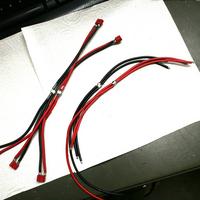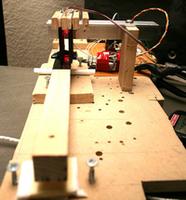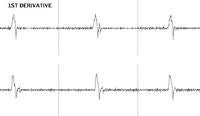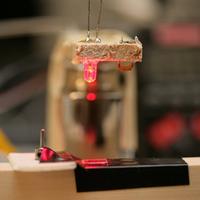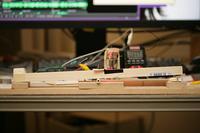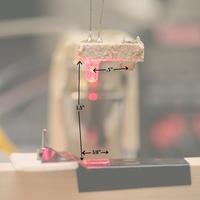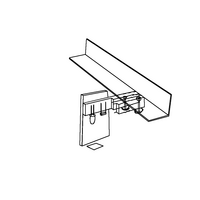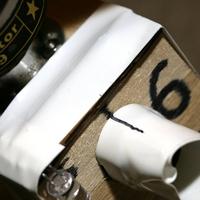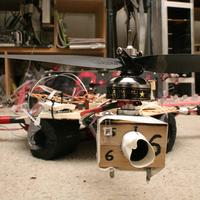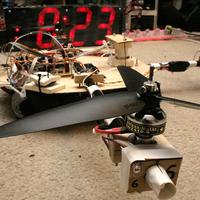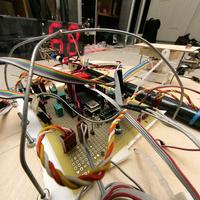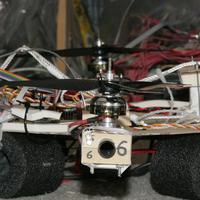Posted by Jack Crossfire |
Dec 23, 2008 @ 02:02 PM | 6,420 Views
After all that hustling between commutes, it was another rain out. Your government has us rained out until next week. Replaced the 12 guage wire with 14 guage to try to get more margin. A tiny change in weight, but all the local guy had.
Meanwhile, piano key sensors didn't go so well. Got good data & a plan for compressing it. Put the test article on the floor to eat, then the sensor stopped working. The sensor is freakishly sensitive to alignment.
Calif* is getting flooded by Oaklahoma, Georgia, & Texas refugees. 4 those of U moving or already in Calif*, basically all of U, U need to file your income tax as soon as possible. Calif* is going to run out of money & start paying I.O.U.'s.
Income tax is going up $2500, but it won't keep Calif* from running out of money. U need to have that extra $2500 ready to pay higher income tax of course.
Posted by Jack Crossfire |
Dec 22, 2008 @ 05:25 PM | 6,671 Views
Decided to throw U a bone with another flight recording.
Flight recording of manual XY movement with the quad rotor programmed to always point towards a point. The computer keeps it flying 1m/s in the pilot's intended direction as the nose rotates. The pilot can also command it to point any side of the fuselage at the point. The actual time was 9 minutes.
Get into this mode using
MOVE lon lat alt
TURN_TOWARDS lon lat
Posted by Jack Crossfire |
Dec 21, 2008 @ 10:00 PM | 6,485 Views
Did some piano research. The white keys R 7/8" wide. The action is 7/16" wide. Still not sure what the true angular movement of the keys is, although we're pretty sure it's identical for white & black keys.
For bare A/D conversion of 88 signals, PICs would be 1/3 the cost of AVR's. The highest cost is photodiodes. Since they have to be large, they could be $100.
Our mockup's first analog data has provided revolutionary insights into key strikes. All the information in a key strike is sent through the action in around 60ms for a light strike & less for a hard strike. As predicted, the action senses acceleration + velocity.
The acceleration data only begins to appear at 8000Hz sampling. A PIC with 11 channels would only get 727Hz per channel. To get the bandwidth of even your cell phone's 16 bit 22khz A/D converter for 88 sensors would be hugely expensive.
Mechanical slop in our mockup greatly affects the voltages. Would have to combine the optical data with the stock MIDI data. The waveform would have to be compressed in the microcontroller & no microcontroller would have enough memory to keep the entire waveform at 1 time.
Posted by Jack Crossfire |
Dec 20, 2008 @ 11:07 PM | 6,641 Views
The 10x4.5's didn't fix any balance. They added enough margin to overcome a bit more imbalance. Can't get it as balanced as it was before the great crash of 12/13/08. Slippage of the CF rods doesn't seem to be a factor. The fault tree is down to damaged motor bearings.
We have onscreen battery & balance information to warn U when you're about to run out of power for attitude control, but had a loss of contol anyways.
Since all we can do is increase margin, the next step is installing lighter wires.
Next, we had a new dream. Your government gave Google's CEO a $17.4 billion check because he couldn't make his mortgage payments, so he decided to buy a retired space shuttle for $42 million.
He was towing it behind his custom mazarrati through Palo Alto, but the streets were too narrow & it hit some garbage cans. The garbage cans smashed an engine. He got out, cursed the damaged space shuttle, & decided to get another one. He gave the damaged one to us.
Unfortunately our dumpy apartment wasn't big enough & the central housing committee ruled we were ineligable for a mortgage because we only needed 1 room, so we towed it back to Kennedy Space Center. After driving 2000 miles, realized we didn't have any clothing on. Drove naked for the entire 2000 miles with only a box of diapers in the back seat.
Our clothing was still in Calif* & all the department stores were bankrupt. Couldn't buy anything. Couldn't find any towels or sheets anywhere. They only had small shirts in the visitor's center. So we ran around Kennedy Space Center naked, looking for someone to take this shuttle, but everyone kept running away. Ended up in a bathroom because we couldn't get any farther.
Posted by Jack Crossfire |
Dec 19, 2008 @ 05:47 PM | 6,540 Views
because VikaCopter got a fresh pack of 20 propellers. That's enough for 10 hours of flying. After reviewing the cost of propellers, there is no economic advantage to having them all spin the same way. There is an advantage to going into the propeller business.
Now a word for your comrades in the USSA.
Posted by Jack Crossfire |
Dec 18, 2008 @ 04:14 AM | 6,643 Views
With the next 50 paychecks slowly creeping their way down from the Land of Layoffs, U get more angle sensing.
So the optimum configuration uses the brightest red LED possible with the narrowest angle & the LED's base 1.5" above the mirror. The centers of the LED & photodiode R .5" apart. The mirror is 3/8" long & as wide as we expect the key to be. Surrounding area is blacked out.
This gives a 25mV swing through the key's motion. The light travels just the length of the photodiode as the key moves.
U must be able to move the sensor sideways to adjust it & get the mirror position to line up with the edge of the photodiode. Also need to block light from adjacent keys & fit it all in the width of a key 88 times. U better get started.
Even if the current sensor worked, it's no guarantee the fully assembled 88 sensors would be even enough. Still not sure how we're going to bias the up & down positions. There seems to be quite a lot of drift with it.
Posted by Jack Crossfire |
Dec 17, 2008 @ 03:32 AM | 7,368 Views
The answer is yes. There is a hobby more useless than UAVs. Meet musical instrument hacking. For all their uselessness, musical instruments always crush UAV's in the electronic hobbyist contests. A musical instrument beat out a UAV to win the latest parallax.com contest. Musical instruments R everywhere in the Maker Fairees.
Musical instruments may be more insane than UAVs. If U want the best piano sound, U still have to buy a $100,000 Steinway D. U can't even buy a house big enough for one in USSA. U need to get on a government waiting list. The best UAV's R just in the $10,000's.
So with our piano key test mockup, the optical angle sensor gives a 5mV swing if it's precisely aligned, but it's pretty unreliable.
As you've probably gathered, we've abandonned VicaGlider. It's mainly too expensive to operate 2 vehicles & the mission has changed from long duration telepresence to short, preprogrammed camera shots.
Posted by Jack Crossfire |
Dec 16, 2008 @ 04:06 AM | 6,458 Views
The GWS tri blades R trash. They probably generate less power than the 9x6's. Could probably get them to balance using a better method than guide markings. A big issue is getting the carbon fiber rods to not rotate on their own.
We have a procedure to try to detect a thrust imbalance & warn the pilot along with the low battery, low radio bandwidth, & the usual visual cues.
December so far:
5 prop pairs: $29.40
4 new motors & 4 GWS props: $55.91
10 prop pairs: $51.85
--------------------------------------------------------
$137.16
With that, U get another blog graveyard story.
You seem intent on spending as much money as humanly possible to keep SUV's rolling off the assembly lines & into an enourmous pile.
It's time to forget about individually driven cars & roads as you know them. Cars can still be individually owned, as far as your government credit program allows, but the driving needs to be centrally controlled & the roads need to be specifically designed for autonomous electric cars. Maybe they need inductive charging or 3rd rails embedded in the asphalt.
You get in your car, dial up the destination, & a central computer synchronizes your trip with all the other cars so everyone can complete their trip without stopping. If cars were just invented today, they would all work like this. Roads would be designed from the ground up for autonomous electric cars & continuous recharging.
Posted by Jack Crossfire |
Dec 15, 2008 @ 04:08 AM | 6,711 Views
Now that Rain Ramon is back to 24/7 rain, we got only some captive tests using the nacelle angles to stabilize yaw.
It's time to exume something from the blog graveyard. Today's blog grave is electric pianos #2.
In a real piano, the acceleration & terminal velocity of the key determines the loudness & tone quality. Those computer scientist musicians in Japan don't think about acceleration much. Acceleration is the rate at which the key goes from 0m/s to the terminal velocity. The faster the key goes from 0m/s to terminal velocity, the brighter & drier the sound. Lower acceleration produces mellow, wetter sounds.
Electronic pianos only convert total velocity to loudness. They detect the start & end times of key travel through a reed switch & that's it. Acceleration would require knowing the instantaneous position of each key, huge amounts of bandwidth, so it's never been done.
The electric piano hack is coming down to 3 options:
Completely remove the strip of reed switches & replace it with a strip of optical bounce sensors using tubes for isolation.
Drill holes under each key's weight & install optical bounce sensors.
Install an optical bounce sensor above each key & a small mirror on each key. Sense angular movement by the horizontal travel of the LED's reflection.
Posted by Jack Crossfire |
Dec 14, 2008 @ 07:17 PM | 6,727 Views
There's danger in the RF above Rain Ramon at 1am. The last radio crash was at 12:58am. The next day in the apartment, saw bandwidth drop to 2kbit from 12:50-1:10 & then return to 18kbit by 1:30. U can see see it drop at other times if U scan long enough.
The latest theory is a large number of computers R running the same software & this software defaults to transferring a massive amount of data over 802.11 every day at 1am. A Windows virus scan program seems most likely.
There is no way to run XBee's outside the 802.11 spectrum. 900Mhz seems to be on the budget again.
The autopilot has enough margin to lift off a repaired vehicle without manually testing it. Doing so is unwise. The GWS tri blades aren't matched. The clockwise pair generates less thrust than the counterclockwise pair. You'll quickly hit maximum power & crash. So we're testing angled nacelles for the GWS's like toy quad rotors.
Someday, someone in a free country is going to resolder all their motors to spin the same way & try flying with angled nacelles. The advantage is having a wider selection of cheaper blades. This costs energy just like a tail rotor, however. In the mean time, back to paying your SUV bailout.
FYI, these angled nacelle photos were with the EOS 5D underclocked to 3 megapixels & ISO 3200.
Posted by Jack Crossfire |
Dec 13, 2008 @ 07:53 PM | 6,741 Views
Lost radio contact again. Beauty crash. Of all the trigonometry, calculus, algorithm design, computer science, & Ben Waggoner bonuses, the biggest problem is this flaky radio.
https://www.rcgroups.com/forums/show...76&postcount=1
The last time we fought this war, HP was.... laying massive numbers of people off. These guys don't have much imagination.
Was at the point where it was the PIC UART locking up at 115200, but we now have it running 12 hours without a crash. All roads point to the environment.
U think since we can land autonomously, she should get an onboard computer & land autonomously when the radio fails. Well, the usual autopilot failures are compass failures. Those cause her to fly faster & faster the wrong way. Having her plunge straight down still feels better than having her crash into someone's SUV.
The compass may be getting distorted by the growing pile of SUV's from your SUV factory bailouts.
Posted by Jack Crossfire |
Dec 13, 2008 @ 02:48 AM | 5,201 Views
UAV programs have manual override. After the end of the program or during HOVER commands, the pilot can override position & heading.
MOVE lon lat alt
TURN_TOWARDS lon lat
SET_ARC lon lat
puts U into polar coordinates, facing a fixed point. The right stick orbits & zooms the point in polar coordinates. That's a lot of trigonometry but business as usual in the computer graphics business. Unfortunately, U can't go in & out of polar coordinates & fixed pointing without rebooting. She needs an inflight GUI.
Now the rest of the story.
SET_ARC doesn't work well in high wind. It just computes angular distance to satisfy waypoints. U can be blown to the center & still satisfy.
Anyone who tries to explain altitude problems might as well throw their money at American communist programs. GPS has no logic. Sometimes up is down. Sometimes left is right. U have to have a satellite directly overhead to sense altitude. Without moments of glory like that, U might as well give up & go to a movie.
So we're not going to try explaining why one day automatic takeoffs were a failure with the UAVPL program, worked very well without a UAVPL program & started working when HOVER was set as the first UAVPL command. It just started working.
Mikrocopter skips GPS & uses a $20 MPXAZ4115A barometer for altitude. It seems to work well. No idea how well it works in Calif* wind. The $60 SCP1000 barometer from Sparkfun got too many errors in wind & it still lagged GPS. It just gave us Sparkfun bling.
GPS would have been much better if at least 1 satellite was in a geostationary orbit, but that would have cost a few bank executive bonuses. Maybe someday when navigation transponders shrink to the size of fleas, someone in a free country will attach navigation transponders to every communication satellite before launch, then sell very precise 3D position sensors to Americans.
Posted by Jack Crossfire |
Dec 12, 2008 @ 02:23 AM | 4,783 Views
The crash recovery isn't going so well. Something's wrong with navigation & automatic takeoffs aren't working at all, so U get the Santa Claus blog.
There is no Santa Claus. If there was a Santa Claus, she would be a heroine instead of a man.
However, the concept of a single workshop making all the world's toys & a single person in a single vehicle traveling around the world to deliver the toys is real.
The real santa clause is a ship captain. The real workshop is China. The real sleigh is an ocean freighter.
Whoever invented Santa Claus was a genious because it's become the most efficient way of supplying the world's XMas presents. We do it with an ocean freighter & an army of Chinese elves.
Now page 2.
Communism must always have a captain. It can never disappear because humans can't sense absolutes. They only sense differences. If they don't sense a conflict, they'll pick communism. By winning cold war #1, US inherited the torch of communism & now look what's happened to China.
China coverage used to be about human rights & freedom of speech. Now it's pure evil. It's got no social programs, entitlement programs, or economic equality programs. Evil!! Their pure capitalism has cost their mortgages & jobs & made them drive around Civics while we have troubled asset recue programs, job programs, & SUV programs.
If those crazy Chinese got hold of Abu Dabbi or Vietnam, they could destroy US's way of life.
...Continue Reading
Posted by Jack Crossfire |
Dec 11, 2008 @ 02:30 PM | 4,337 Views
Another round of batteries got those UAV programs running nicely. Be sure to put MOVE, HOVER after takeoff to climb to altitude.
Today's main event was great difficulty with GPS altitude. After a translation with continuous turning, GPS altitude spiked up, causing her to plunge. Manual override involved a complete loss of orientation.
Then had a number of failed takeoffs because GPS altitude was giving higher numbers when altitude was lower. She was taking off & plunging. By the time she stayed up, the battery was dead, but too many debugging printf's obscured the battery level until it was too late. Lost orientation in a manual override again.
Haven't been able to recover manually from autopilot in a while. It's much harder to determine orientation without a tail boom & when you're not flying full time. More complicated maneuvers R happening under computer control than ever before, making U less likely to know what it's doing.
The quad rotor is still costing the same to operate as the T-Rex. The benefits R outweighed by the larger size & more complicated autopilot missions.
Posted by Jack Crossfire |
Dec 10, 2008 @ 04:41 AM | 4,558 Views
Getting a UAV programming language to work is bread & butter computer science. U could actually get a day job writing programming language interpreters, just not for UAV programming languages.
Unfortunately, can't properly generate arc movements. Went with a hack instead, to give visually pleasing arcs in simulation. Fortunately, it doesn't matter. They look horrible in flight tests.
Got another Goog Earth bailout so we can visualize UAVPL missions complete with animations, before flying them. Just takes a lot of hacking to get the programs right when U don't have a GUI for the programming side.
We're going to be fixing UAVPL bugs 4 a long time. HOVER followed by ARC MOVE is fatal. Got some nice flips out of that one.
Timing isn't as good as we hoped, since the actual velocity is still far below the fake waypoints. For a pirouette during translation, you're stuck with a large number of MOVE & TURN commands, hoping the MOVE commands are timed exactly with the TURN rate.
Probably going to add special arguments to the TURN command to make it turn constantly.
Posted by Jack Crossfire |
Dec 09, 2008 @ 02:42 AM | 5,513 Views
The advantage with velocities by fake waypoint is U know very accurately what time you're going to arrive at a point. U can synchronize turns with translations. U can do all these camera moves.
forward flight & stop at waypoints
static hover at waypoints
forward flight without stopping at waypoints
turning while moving
turning in place
variable horizontal speed
variable turn rates
pointing towards a fixed location while moving
pointing away from a fixed location while moving
curved paths
Unfortunately, what we've done so far has taken diabolical amounts of waypoint logic & this list is beyond the limit of simple waypoint navigation. What U need is a complete UAV programming language.
// begin turning to new heading in degrees.
// command returns immediately
TURN heading
// begin turning towards an absolute position.
// command returns immediately
TURN_TOWARDS lon lat
// wait for turn to complete
WAIT_TURN
// Hover for duration in seconds.
// Duration of 0 or WAIT_TURN causes a stop at the waypoint.
HOVER duration
// Fly to the position. alt is m. speed is m/s
// U must call hover to stop at the position.
// Command returns when waypoint is reached.
MOVE lon lat alt
// Automatic landing
LAND
// Automatic takeoff for multiple landings & takeoffs (not supported)
TAKEOFF
// Set the horizontal speed in m/s (default MANUAL_V)
SET_SPEED speed
// Set the turn rate in deg/sec (default YAW_STEP)
SET_TURN_RATE
...Continue Reading
Posted by Jack Crossfire |
Dec 08, 2008 @ 04:54 AM | 4,521 Views
So VikaCopter's flight controller dates back to the 1Hz GPS & Corona. Her attitude responded to velocity & velocity responded to position, but what worked for 1Hz is not ideal for 4Hz.
All the other uBlox VTOL's have orientation responding directly to position & mostly ignore velocity.
The problem is the Blox algorithm can't do straight lines at constant speed & if the waypoint is too far away, it'll flip U over. U have to implement fake waypoints.
The algorithm is:
place a fake waypoint where U would be at the current time if U were going the desired speed. Disregard whether U ever satisfy the fake waypoint until U reach the final destination. That required rewriting a huge amount of the waypoint & PID logic.
U can't hit waypoints using fixed velocity, however. U need another rule that switches from the fake waypoint to the real waypoint when U think U can't get any closer & hope you're close enough that the position controller doesn't flip U over.
So how well does the Blox algorithm work? Not terminator precision, but much better than the Corona algorithm. For camera robots with very little flight time, your autopilot needs 2 perform missions as fast as possible & the Blox algorithm is very fast.
Programmed this mission:
take off
fly to waypoint 1 at 2m/s
fly to waypoint 2 at 2m/s
rotate 360
fly to waypoint 1 at 2m/s
land
This took 150 seconds with the Blox algorithm. The automated landing took over half that. Unfortunately, the automated yaw rate was too fast for the gyros, so heading was slightly off after the pirouette, but she finished the mission.
Looks like yesterday's dead battery got damaged more than it already was & now it's back to 6min flight times.
Posted by Jack Crossfire |
Dec 06, 2008 @ 09:31 PM | 5,998 Views
Got some video of some missions using fully autonomous takeoff, waypoints, & landing, before heading down to the day job. Unfortunately, couldn't get Goog Earth to export a useful path, so she kept flying to the trees for the landings. This was standard Rain Ramon wind.
Burned up a few batteries on still photos & CU's because we couldn't get enough GPS quality for automated takeoffs. When GPS improved, had enough battery power for 1 complete mission. 1 other mission had a battery warning & 1 mission had a dead battery crash. Indeed, we're averaging 1 propeller every 6 batteries & they're too flimsy for even properly installed prop savers.
There is no soft cutoff with the SuperSimple ESC's, not that it would do any good on a quad rotor.
Bad news. U can't get any more flag shots. The surveillance cameras interfere too much with the radio. That worked with embedded autopilot where we only needed 9600 bps of uplink, but there isn't enough bandwidth to get enough telemetry down for the ground based autopilot.
...Continue Reading
Posted by Jack Crossfire |
Dec 06, 2008 @ 01:14 AM | 4,475 Views
Unlike the lunar lander challenge, the Calif* lander challenge is only 32m horizontal & 10m vertical because because there isn't enough room in Calif*. Also, the Calif* lander challenge doesn't have precise positioning, rocket engines, or prize money because that went to mortgage bailouts.
So got automatic takeoff & landing trimmed out to where it looks pretty slick most of the time. In fact, it's faster to use automatic takeoff than human control. It's a matter of hard coding a lot of parameters to where the least amount of logic depends on GPS, mainly,
1) Getting the ramping speed low enough to not overshoot & high enough to not flop around on the ground.
2) Setting a high enough starting collective to get away with lower ramping speeds.
3) Using the PID controller to pull back neutral collective to what it should be after takeoff instead of 1m/s collective.
4) Trimming the neutral IMU attitude so it doesn't leap sideways during takeoff.
5) Doing 1 manual flight to get the cyclic & rudder reasonably trimmed.
but this has a lot more margin than some of our other robots. If U threw it on the ground & hit the switch, it would probably succeed despite a hairy takeoff.
Also, we're enabling full position hold for takeoff & landing, unlike GA Tech. U need a lot of battery reserve to do automatic landings.
Unfortunately our day job is back to its usual 7 day/week commitment & your government predicts above normal rain in 7 days. Not sure you'll get a daytime video of a Calif* lander challenge.
Posted by Jack Crossfire |
Dec 05, 2008 @ 03:21 AM | 6,587 Views
So the propellers from Illinois made it after only 4 days. The propellers from China R still working their way through. Eventually we'll have a collection of 3 blade props as backups.
Got through 3 batteries without a crash. Hooray. The 10x4.5's + a very balanced ship got 9 minute flight times. Motor propeller combination is that important. Unfortunately we're still behind the T-Rex.
Besides flight time, we now have a freakishly quiet ship. Motor adjustment & slower RPM definitely paid off. Holy mother of mufflers it's quiet. Never heard of a powered aircraft so quiet. Even those powered gliders R like semi trucks in comparison.
The piece de resistance was of course, AUTOMATED TAKEOFF & LANDING using GPS ONLY. That's right kids. They say if U can get automated takeoff & landing to work using GPS only, U still can't afford a house but U must be able to afford something. It's much easier on a quad rotor because it's harder to flip over.
Programmed a bunch of rules for takeoff to work around GPS.
1) Minimum collective at power on starts the auto takeoff. Wait until absolute GPS climb rate is below a maximum starting value. Then set the hover position 10m above the stable altitude reading. Neutral cyclic & rudder R set to the starting stick positions.
2) Ramp collective until GPS climb rate is above a minimum ending value. Maintain 0 horizontal velocity & disregard position. U need to ramp fast enough for the attitude
...Continue Reading
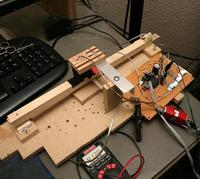 Views: 297
Views: 297 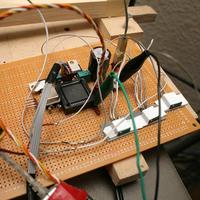 Views: 245
Views: 245  Views: 225
Views: 225 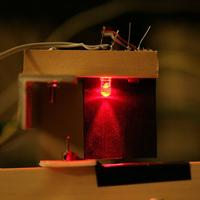 Views: 231
Views: 231 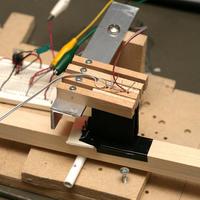 Views: 246
Views: 246 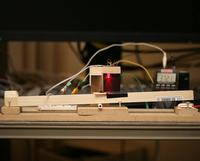 Views: 270
Views: 270  Views: 275
Views: 275 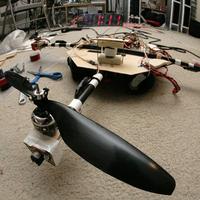 Views: 283
Views: 283 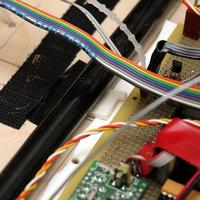 Views: 265
Views: 265 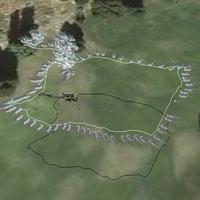 Views: 298
Views: 298 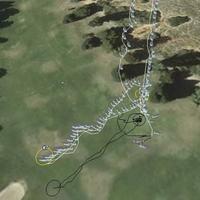 Views: 247
Views: 247 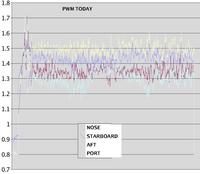 Views: 271
Views: 271 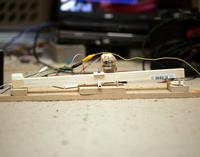 Views: 313
Views: 313 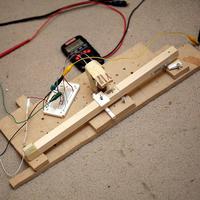 Views: 312
Views: 312  Views: 278
Views: 278 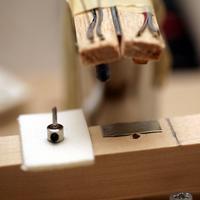 Views: 287
Views: 287  Views: 275
Views: 275  Views: 258
Views: 258 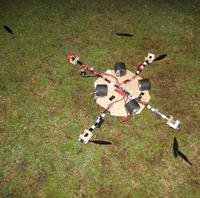 Views: 284
Views: 284 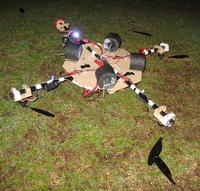 Views: 289
Views: 289 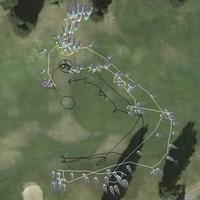 Views: 277
Views: 277  Views: 256
Views: 256 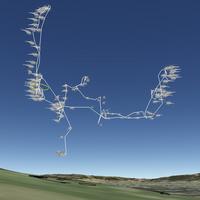 Views: 276
Views: 276 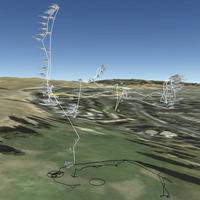 Views: 239
Views: 239  Views: 236
Views: 236 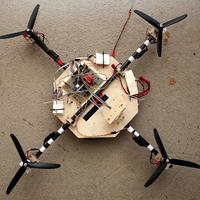 Views: 272
Views: 272  Views: 161
Views: 161  Views: 145
Views: 145  Views: 151
Views: 151  Views: 127
Views: 127  Views: 158
Views: 158  Views: 159
Views: 159  Views: 156
Views: 156  Views: 203
Views: 203  Views: 191
Views: 191  Views: 168
Views: 168  Views: 172
Views: 172  Views: 172
Views: 172  Views: 156
Views: 156  Views: 269
Views: 269  Views: 231
Views: 231  Views: 227
Views: 227  Views: 274
Views: 274  Views: 255
Views: 255  Views: 230
Views: 230  Views: 235
Views: 235  Views: 255
Views: 255  Views: 173
Views: 173  Views: 153
Views: 153  Views: 135
Views: 135  Views: 162
Views: 162  Views: 319
Views: 319  Views: 209
Views: 209  Views: 389
Views: 389  Views: 355
Views: 355  Views: 310
Views: 310  Views: 282
Views: 282  Views: 236
Views: 236  Views: 315
Views: 315 